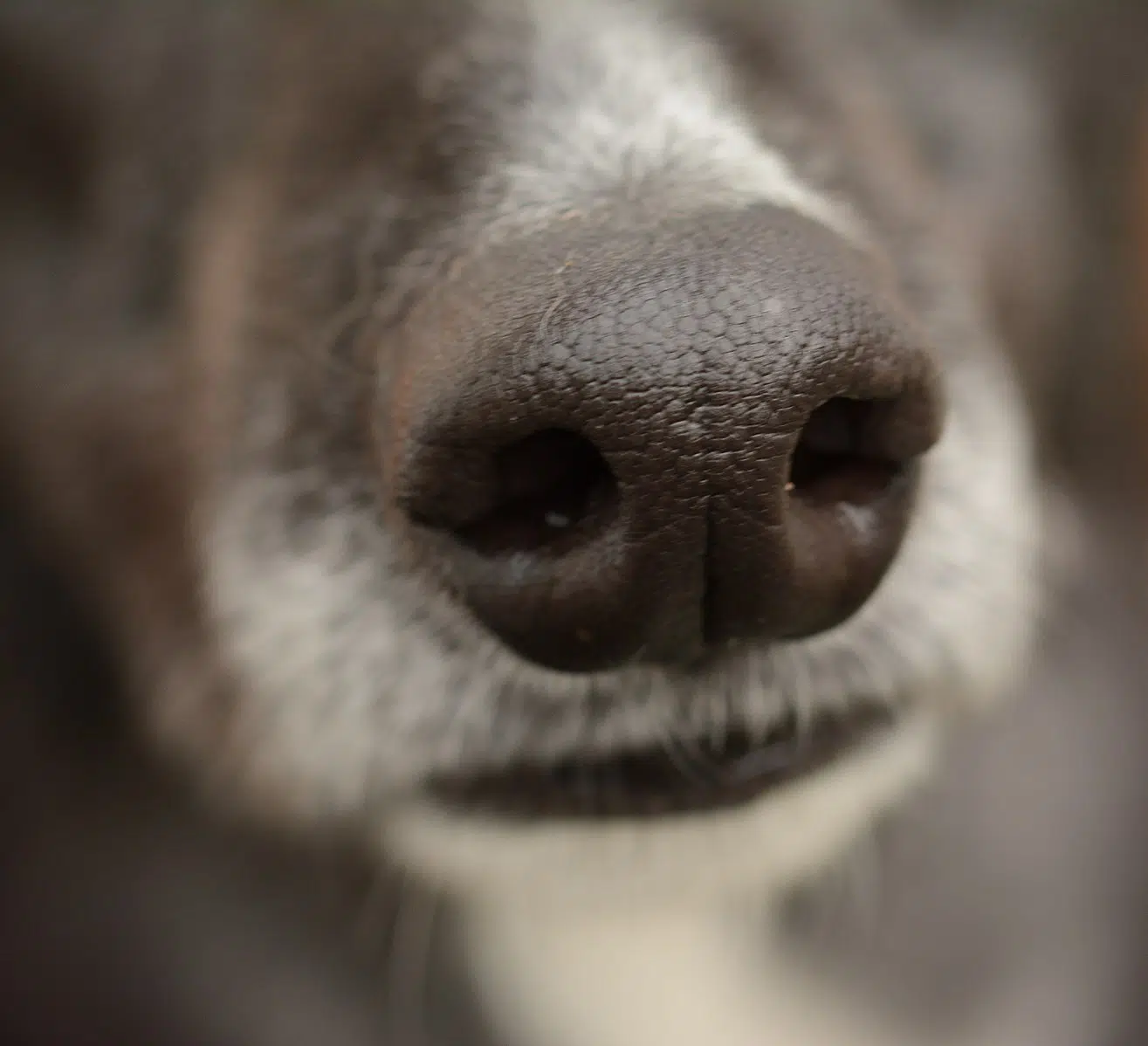
Throughout our homes, we have electronics that can hear and see us, but we don’t yet have technology that can smell. However, even this may be changing. And what if we could detect cancer by smelling it? The science suggests this is possible.
“I think we’re maybe five years away, maybe a little bit less,” to having the technology to make smartphones that smell, says Andreas Mershin, a research scientist and inventor at MIT, in an interview with Vox. “And I’m talking (about deploying it) into a hundred million phones.”
Research suggests dogs can smell cancer, malaria — and, really, any condition that causes changes in human body odor — so why can’t we imitate that using technology?
The idea, however, is to replicate the incredible disease detection capabilities of dogs in a more portable, accessible form to help flag insidious illnesses early on.
Essentially, scientists hope to engineer a “robot nose” to detect diseases the way a dog’s nose can. “The idea has always been for the dog to translate what he knows with his nose to an electronic device,” says Claire Guest, a scientist who is researching COVID-19-sniffing dogs, in an interview with Vox.
Robot, cancer sniffing noses explained
Scientists know a great deal of the basic mechanics of smell.
Deep in our noses, there are special receptors that interact with the odor molecules which we breathe in. And we know that those receptors send signals to the brain.
The problem, though, is that we don’t know why things smell the way they do. That is, why does one odor molecule smell one way, while another similarly shaped odor molecule smells different? That is still a mystery.
With vision, there are only a handful of receptor types, and the way they interact is well understood; but with smell, there are 400 types, and we’ve only just begun to understand how they work together to detect a scent.
The mystery of smell isn’t deterring scientists, however.
“I have access to over $100 million worth of equipment,” Mershin says. “And it kind of pisses me off that a lowly dog can do better than $100 million worth of equipment. Something’s off with that picture. I should be able to do this!”
How do you build a robot nose?
In a collaboration with MIT’s Shuguang Zhang, Mershin, and their team built something that could directly detect odor molecules themselves, using real smell receptors, which they grew in cells. They then spread the receptors out over a circuit board.
The hope was that the receptors would give a readout of all the odor molecules nearby, but the team realized there were so many molecules it would need to detect — so many smells bouncing around — that the alarms would have gone off way too often, which rendered it somewhat useless.
For their next attempt, which they called the Nano-Nose, Mershin and Zhang tried something different.
Whereas their previous version was supposed to detect individual molecules, this one looked at the bigger picture: an overall smell. The Nano-Nose recorded the pattern of electrical activity produced by the receptors in the presence of an odor, with each smell producing a particular pattern that the computer could recognize.
Using machine learning, a form of artificial intelligence, Mershin tried to get the Nano-Nose to recognize the smells. He exposed the Nano-Nose to what it needed, so to recognize the test and let it teach itself how to recognize the smells, which ultimately showed that the Nano-Nose could detect smells using real receptors.
In a continuation of his research, Mershin is trying to prepare the Nano-Nose for everyday applications. Earlier iterations were as big as a desktop, but he now says he’s shrunk the technology so that it could fit inside a smartphone.
Cancer-sniffing phones could help save lives
Mershin still needs to train the Nano-Nose more before it can actually smell diseases in everyday situations, but it’s possible to get past this hurdle by exposing the receptors to many more smells in order to improve its algorithm. Since there is some proof that it works, it’s possible phones that smell may not be far off.
Giving our phones a new way to monitor our behavior comes with some clear concerns. Would the data smelled by the phone be private? Could it be possible that the robot nose could be hacked or become accessible to advertisers?
Despite privacy concerns, a pocket-sized robot nose could help save lives, of course.
“Any single one of us can have a mole that becomes malignant,” Mershin says. “If you wait six months, sometimes it becomes a death sentence,” but if your phone could notice a change of smell, it might alert you earlier.
Guest, who is the scientist training dogs to detect disease, says she understands this lifesaving potential personally. Years after she began her research, her dog Daisy started looking upset. She kept “staring at me and then nudging at me and staring at me and nudging at me,” she says. She felt where Daisy was nudging and found a lump, which caused her to eventually get diagnosed with breast cancer, meaning it’s quite possible that Daisy saved her life.
Not everyone has access to dogs like Guest’s, but nearly everyone has a smartphone. Right now, our phones can’t smell cancer, but one day they might save a life.
See all the latest news from Greece and the world at Greekreporter.com. Contact our newsroom to report an update or send your story, photos and videos. Follow GR on Google News and subscribe here to our daily email!



